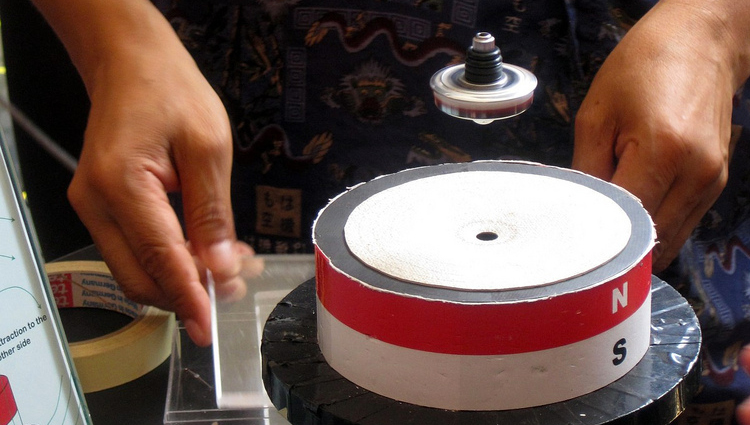Speedy Train Technology Finds New Food Safety Niche

Image credits: Roberto Arias via Wikimedia Commons
(Inside Science) -- Magnetic levitation technology is the darling of mass transit: High-speed trains floating above magnetic tracks can sweep passengers along smoothly at 300 miles per hour. Now, researchers have discovered an entirely new application for the futuristic technology: food quality control and safety.
A team of chemists at Harvard University in Cambridge, Mass. has developed a palm-sized maglev apparatus that can be used to determine densities of various substances, quickly and accurately.
“Density is a universal property of matter, everything has density,” said Katherine Mirica, a chemist at Harvard and lead author on the new study published in the Journal of Agricultural and Food Chemistry.
Density measurements can help determine the sugar content of soft drinks, the fat content of peanut butter and the alcohol content of wine. Existing techniques for taking such measurements are often complicated, cumbersome and expensive, Mirica said.
To create a mini-maglev device, Mirica and colleagues suspended a fluid-filled vial between two ice cube-sized magnets. They found that samples of milk, peanut butter and vegetable oil placed inside the vial would levitate a certain distance between the magnets. The distance, measured by a ruler, directly correlated with the sample’s density.
Based on density measurements, the team was then able to quickly estimate the salt content of different water samples and the relative fat content in different kinds of milk, cheese, and peanut butter.
"Potential applications of maglev may include evaluating the suitability of water for drinking or irrigation, assessing the content of fat in foods and beverages, or monitoring processing of grains,” Mirica said. “It’s extremely versatile and we’re still figuring out the most useful applications for this technology.”
With further development, the maglev method could be a much-needed new tool for the food industry, said Roger Clemens, an expert in food safety at the University of Southern California’s School of Pharmacy in Los Angeles.
On a production line, ingredients from many sources are mixed and processed very rapidly, making the task of ensuring food quality and safety very challenging, Clemens said. “We have come a long way, but we still don’t have adequate methods to rapidly screen for contaminants,” he said.
Currently, companies and regulatory agencies rely on a mishmash of old and new technologies to ensure quality control and safety. Analytical chemistry, X-ray and infrared technology, and lipid melting points are all common diagnostic methods, Clemens said.
“I see this maglev device as a potential new tool. I think it has a long way to go before anybody in the food industry could actually use it on a fast- moving processing line, but it’s intriguing to think about the possibilities,” he said.
Mirica and colleagues are now working to transform the maglev device into a useful tool that can be operated outside of the laboratory. “We’d like to further simplify the apparatus, make it smaller and more user friendly," Mirica said.
“They are on the right track,” Clemens said. “This is exactly the kind of outside-the-box innovation we need to improve the food safety industry.”
